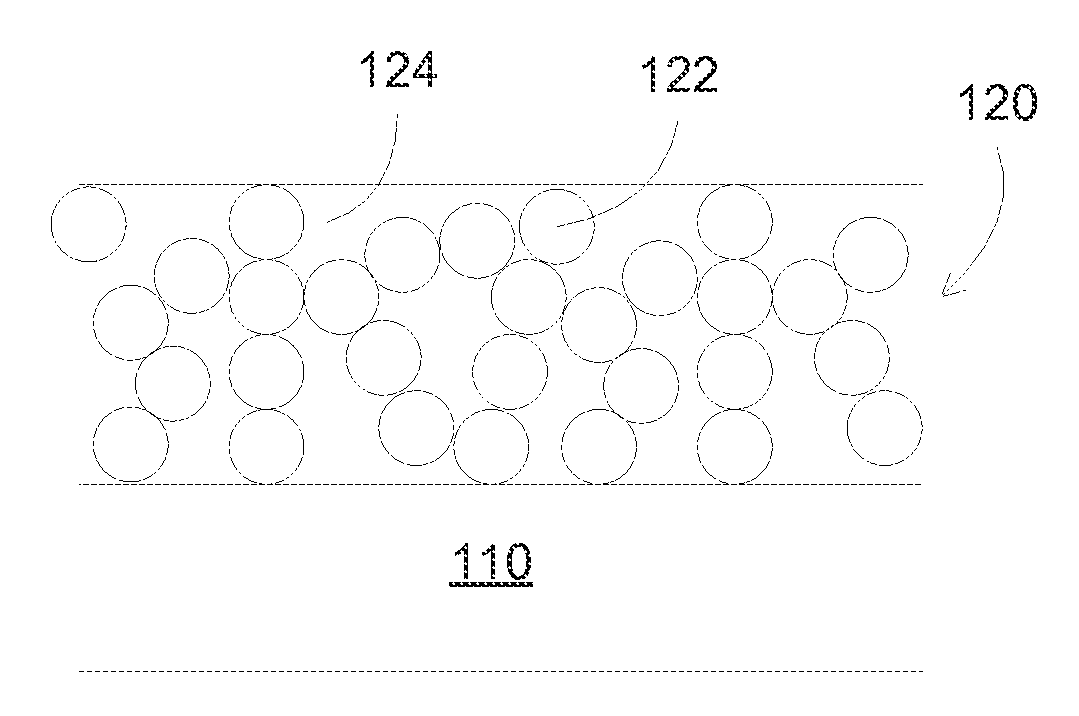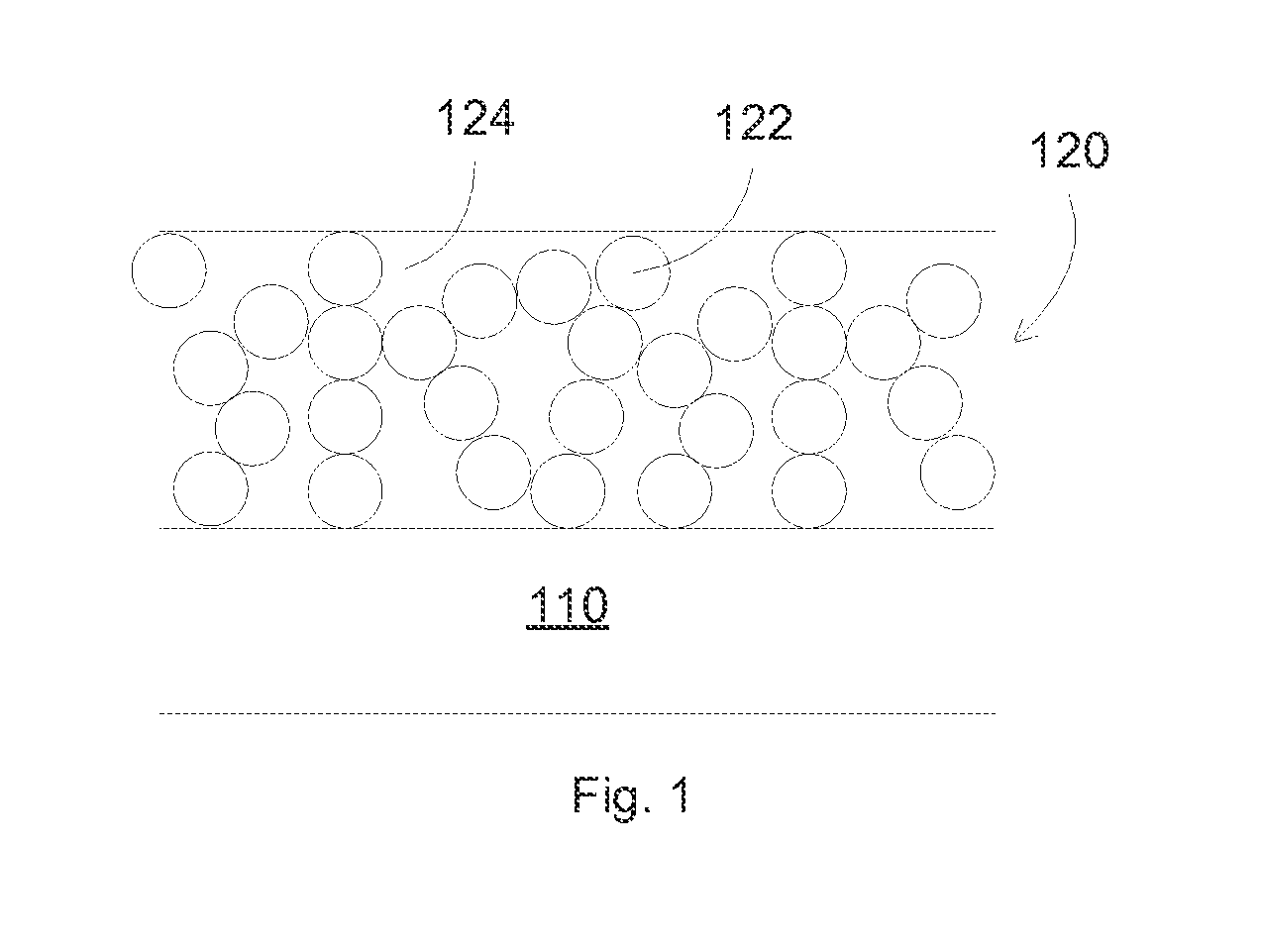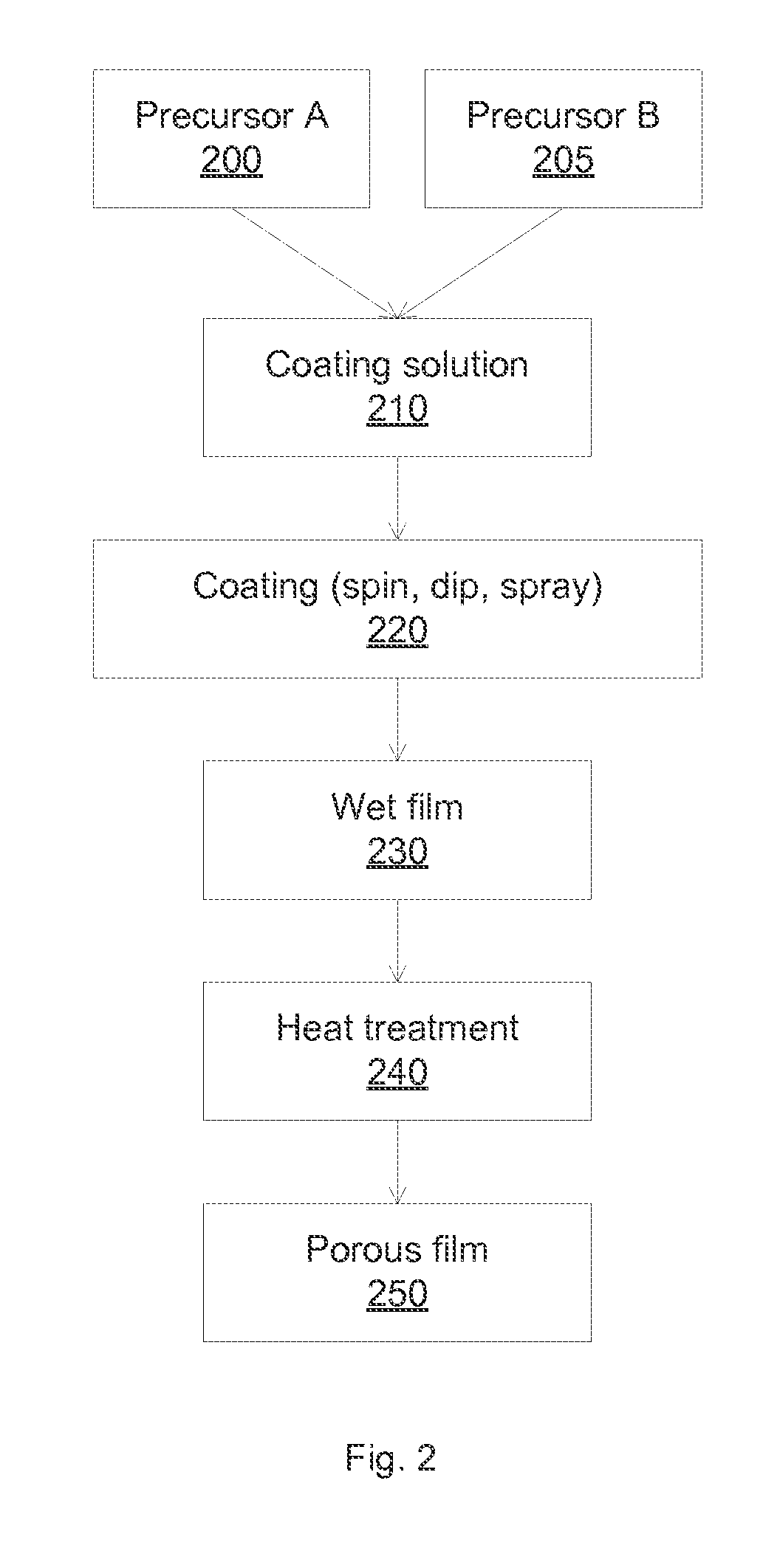Magnesium Fluoride and Magnesium Oxyfluoride based Anti-Reflection Coatings via Chemical Solution Deposition Processes
a technology of anti-reflection coating and magnesium fluoride, which is applied in the direction of liquid/solution decomposition chemical coating, optical elements, instruments, etc., can solve the problems of high moisture absorption resistance of porous metal oxide ar coatings used in solar applications, and poor adhesion of coatings. achieve the effect of controlling the porosity level and morphology of coated layers
- Summary
- Abstract
- Description
- Claims
- Application Information
AI Technical Summary
Benefits of technology
Problems solved by technology
Method used
Image
Examples
example 1
Porous MgF2—MgOF Coating from Magnesium Fluoroalkoxides
[0072]Magnesium trifluoroethoxide (MgTFE), Mg(OCH2CF3)2, is dissolved in an anhydrous alcohol (ethanol, 1-propanol, 2-propanol, butanol) or trifluoroethanol to form a solution with a concentration of 0.01-1.0M MgTFE. Optionally, water and a fluorine containing catalyst (e.g. HF, NH4F, NH4HF2, CF3COOH) may be added to concentrations of 0-2.0M (ratio of water or catalyst to Mg≦2). A surfactant porogen is added to the solution. The solution is aged for 0.01 to 24 hrs at 0-40° C., and then applied to a cleaned glass substrate via a solution coating method such as curtain, dip or spin coating. The coating is allowed to dry and gel, and then rapidly heated to 100° C.-800° C. until the coating is converted to MgF2 or MgOF that has densified to the desired extent. Curing and conversion of the coating may also be induced rapidly by rapid thermal processing methods (IR-UV radiation, laser, microwaves) or exposure to atmospheric pressure p...
example 2
Porous MgF2—MgOF Coating from Magnesium Alkoxides
[0073]Magnesium methoxide, Mg(OCH3)2, is dissolved in an anhydrous alcohol (ethanol, 1-propanol, 2-propanol, butanol) or trifluoroethanol to form a solution with a concentration of 0.01-1.0M Mg. A fluorine containing catalyst (e.g. HF, NH4F, NH4HF2, CF3COOH) is added to concentrations of 0.02-3.0M (ratio of catalyst to Mg≧2). A surfactant porogen is added to the solution. The solution is aged for 0.01 to 24 hrs at 0-40° C., and then applied to a cleaned glass substrate via a solution coating method such as curtain, dip or spin coating. The coating is allowed to dry and gel, and then rapidly heated to 100° C.-800° C. until the coating converted to MgF2 or MgOF that has densified to the desired extent. Curing and conversion of the coating may also be induced rapidly by rapid thermal processing methods (IR-UV radiation, laser, microwaves) or exposure to atmospheric pressure plasma discharges. This process may be applied to polymeric subs...
example 3
Porous MgF2—MgOF Coating from Magnesium Carboxylates
[0074]Magnesium Acetate (anhydrous or tetrahydrate), Mg(OAc)2, is dissolved in a mixture of a primary alcohol, water and trifluoroacetic acid (TFA, CF3COOH) at 30-70° C. for 1-120 minutes to form a solution with a Mg concentration of 0.01-1.0M, water concentration of 0.01-10M, and a TFA concentration of 0.01-3M. A surfactant porogen is added to the solution. The solution is then applied to a cleaned glass substrate via a solution coating method such as curtain, dip or spin coating. The coating is allowed to dry for 1-10 minutes, and then rapidly heated to 300° C.-800° C. until the coating converted to MgF2 or MgOF that has densified to the desired extent. Curing and conversion of the coating may also be induced rapidly by rapid thermal processing methods (IR-UV radiation, laser, microwaves) or exposure to atmospheric pressure plasma discharges.
PUM
| Property | Measurement | Unit |
|---|---|---|
| temperatures | aaaaa | aaaaa |
| wavelength | aaaaa | aaaaa |
| wavelength | aaaaa | aaaaa |
Abstract
Description
Claims
Application Information
 Login to View More
Login to View More - R&D
- Intellectual Property
- Life Sciences
- Materials
- Tech Scout
- Unparalleled Data Quality
- Higher Quality Content
- 60% Fewer Hallucinations
Browse by: Latest US Patents, China's latest patents, Technical Efficacy Thesaurus, Application Domain, Technology Topic, Popular Technical Reports.
© 2025 PatSnap. All rights reserved.Legal|Privacy policy|Modern Slavery Act Transparency Statement|Sitemap|About US| Contact US: help@patsnap.com



